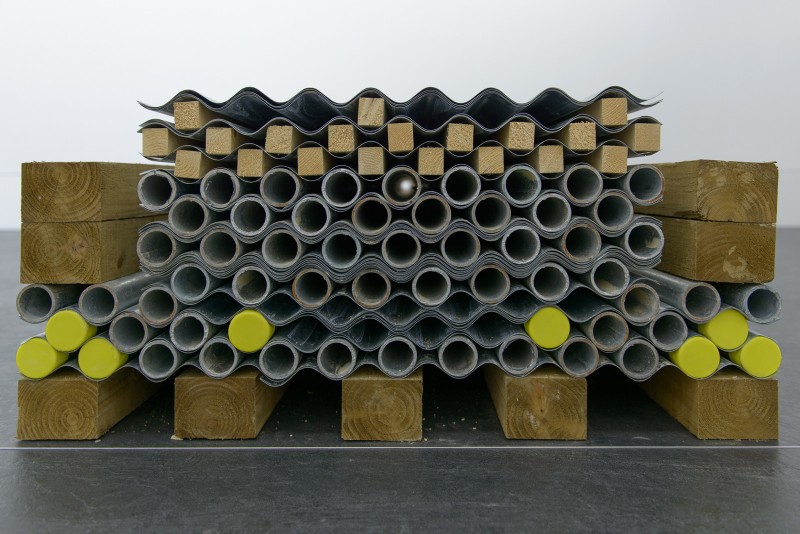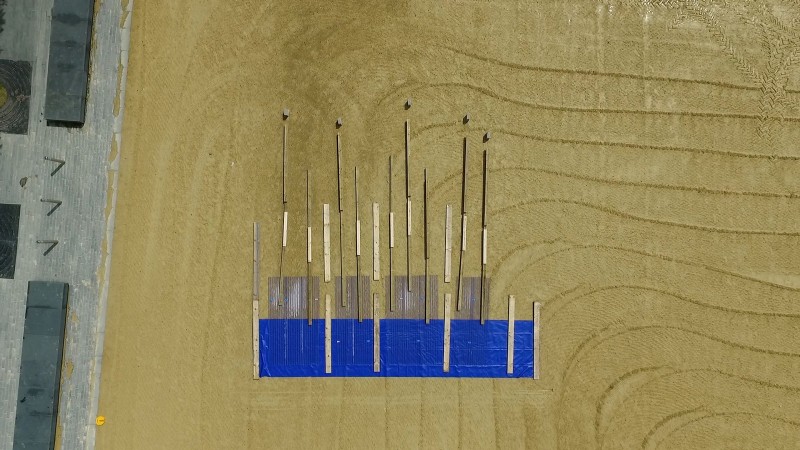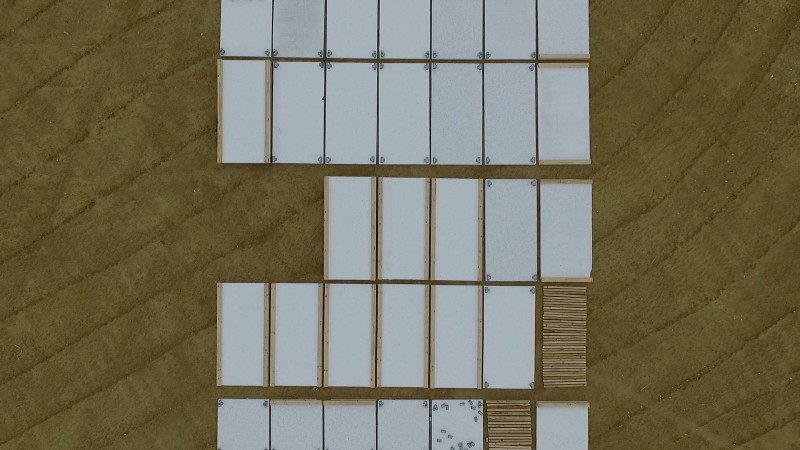Anne Tallentire
Shelter
The upheavals of the First World War find an echo in the ongoing refugee crisis taking place in Europe and beyond. The mass mobilisation of troops stationed across the continent during WW1 left an architectural legacy: the Nissen hut, the familiar curved structure we associate with barracks, refugee camps and internment blocks, was invented by a British Army officer, Peter Nissen in 1916 to house soldiers and supplies.
Irish artist Anne Tallentire explored the Nissen hut in the context of a new humanitarian crisis. Shelter connected local history, global news, and technological innovation. The project was founded on research conducted by Tallentire in collaboration with archivists and historians, to which the artist responded with a range of media, including drawing, montage, photography and film. You were invited to visit her as she worked at an open studio in Building Eighty81, itself a former army barracks in Derry-Londonderry.
To create Shelter, Tallentire worked with the architect Grainne Hassett along with activists and community volunteers to produce structural templates concerned with living, moving and thinking. The final work, reflecting the artist’s longstanding interest in cultural displacement and conditions of daily life, was constructed and exhibited in outdoor public spaces on Ebrington Square in Derry-Londonderry, at the Ulster Museum in Belfast, and in Limerick.
About the artist
Anne Tallentire (born 1949) is a London-based artist working with moving image, sculpture, installation, performance and photography. Through visual and textual interrogation of everyday materials and structures, she seeks to reveal systems that control the built environment, affect displacement and shape the economics of labour.
Tallentire has been working in London since the 1980’s. From 1993 she has also been one half of the artist duo work-seth/tallentire with artist John Seth. Her more recent solo work has been concerned with geographical dislocation and demarcation in relation to infrastructure.
In 2016 she was awarded a major commission for 14–18 NOW, through which she investigated the architectural legacy of the Nissen hut – the tunnel-shaped structure developed during the First World War – in relation to emergency architecture today. She is also the co-organiser, with Chris Fite-Wassilak, of the quarterly peripatetic event series hmn.
Finding meaning in the mundane is the cornerstone of Tallentire’s practice. From works which replicate the minimum square footage required for social housing bedrooms by UK law, to factory production settings relating to the material used in the construction of a youth centre in Calais in 2016, her work is resolutely political and engaged in the work of contesting restrictive mechanisms of power.
Tallentire has exhibited her work extensively, nationally and internationally. Recent exhibitions include the commission and solo show, ‘Plan (…)’ at Grazer Kunstverein, Austria and solo exhibition, ‘As Far As’ at Hollybush Gardens, London. Group shows include ARCO, Madrid; Dallas Museum of Art, Dallas; Tate Liverpool, Liverpool; Flat Time House, London and Techniki Muzej, Zagreb.
Co-commissioned by 14-18 NOW and Nerve Centre, Derry





